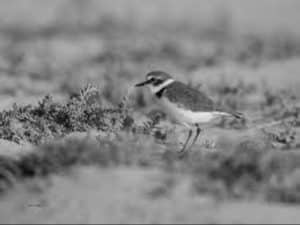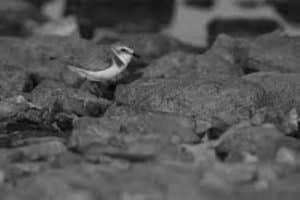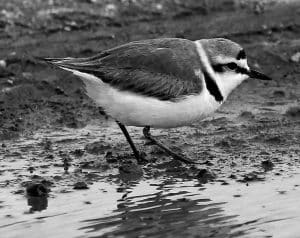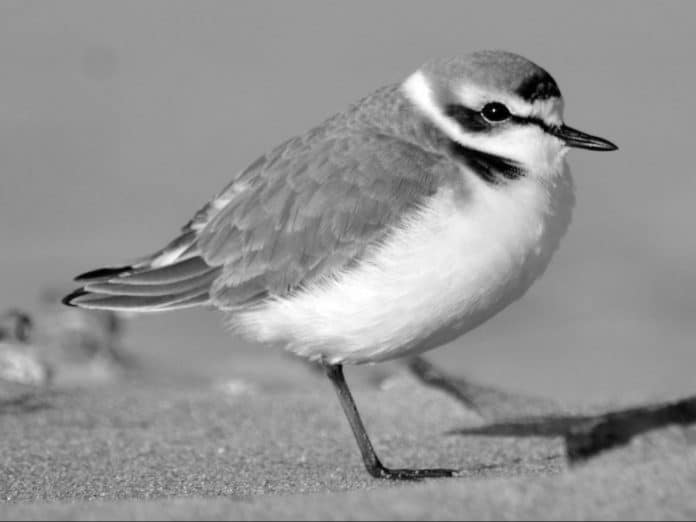Introduction to the Kentish Plover
Welcome to the fascinating world of the Kentish Plover in Tanzania! These small birds are known for their big character and can be found along the coastlines and inland wetlands of this beautiful country. The Kentish Plover (Charadrius alexandrinus) is a species of small wading bird that belongs to the plover family. In this article, we will explore their habitat, physical characteristics, behavior, breeding habits, conservation status, and the role of local communities in protecting them. Additionally, we will provide tips for observing and photographing these charming birds, as well as recommend some fantastic places to spot them in Tanzania.
Habitat and Distribution of the Kentish Plover in Tanzania

The Kentish Plover is widely distributed across the world, with a significant population found in Tanzania. These birds are primarily coastal dwellers, but they can also be found in inland wetlands such as lakes, rivers, and lagoons. Along the Tanzanian coast, the Kentish Plover can be seen scurrying along sandy beaches, searching for small invertebrates and insects to feed on. Their ability to adapt to different environments allows them to thrive in both natural and man-made habitats.
In Tanzania, the Kentish Plover can be found in various regions, including Dar es Salaam, Zanzibar, Pemba, and Mafia Island. These coastal areas provide the perfect combination of sandy shores, mudflats, and shallow waters, which are ideal for the plover’s feeding and nesting habits. The availability of suitable habitats makes Tanzania a haven for these charismatic birds.
Physical Characteristics of the Kentish Plover
The Kentish Plover is a small bird, measuring approximately 15-17 centimeters in length and weighing around 40 grams. They have a round body shape, with short legs and a short, straight bill. Their plumage varies depending on the season and age, but in general, they have a sandy-colored back and wings, while their underparts are white. The Kentish Plover also has a distinctive black band across its white forehead, and during the breeding season, males develop a black breast band.
These birds have excellent camouflage, allowing them to blend seamlessly with their sandy surroundings. Their small size and cryptic plumage make them difficult to spot, especially when they are motionless on the ground. Their inconspicuous appearance is an adaptation that helps them avoid predators and increases their chances of successful breeding.
Behavior and Breeding Habits of the Kentish Plover
The Kentish Plover is an active and social bird, often seen in small groups or pairs along the shoreline. They are highly territorial during the breeding season, fiercely defending their nesting sites from intruders. These birds are known for their elaborate courtship displays, which involve aerial acrobatics, wing-fluttering, and vocal calls. The male plovers strive to impress the females with their agility and prowess.
Nesting takes place on sandy or gravelly areas, where the female constructs a shallow scrape on the ground. The nest is lined with pebbles, shells, or bits of vegetation. The female typically lays a clutch of 2-4 eggs, which are incubated by both parents for about 25 days. Once the chicks hatch, they are precocial, meaning they are capable of feeding themselves shortly after hatching. The parents diligently care for their young, protecting them from predators and guiding them in their foraging activities.
Conservation Status and Threats Faced by the Kentish Plover in Tanzania
The Kentish Plover is classified as a species of “Least Concern” by the International Union for Conservation of Nature (IUCN). However, their populations are declining in some regions, including Tanzania. The main threats faced by these birds are habitat degradation, disturbance from human activities, and predation. Coastal development, pollution, and increased tourism pose significant challenges to their survival.
To address these threats, various conservation efforts are underway in Tanzania. Local communities, conservation organizations, and government agencies are working together to protect the Kentish Plover and its habitat. Measures such as habitat restoration, awareness campaigns, and the establishment of protected areas are helping to safeguard these charismatic birds for future generations.
The Role of Local Communities in Protecting the Kentish Plover

Local communities play a crucial role in protecting the Kentish Plover in Tanzania. They are the custodians of the land and have a deep understanding of the ecological importance of these birds. Through community-based conservation initiatives, local people are involved in monitoring the nesting sites, raising awareness among tourists and fellow residents, and participating in research projects.
By engaging with local communities, conservation organizations can promote sustainable ecotourism practices that benefit both the conservation of the Kentish Plover and the livelihoods of the communities. This collaborative approach fosters a sense of ownership and responsibility among the locals, ensuring the long-term protection of these charming birds.
Opportunities for Birdwatching and Ecotourism in Tanzania
For bird enthusiasts and nature lovers, Tanzania offers incredible opportunities for birdwatching and ecotourism. The country’s diverse ecosystems provide a haven for numerous bird species, including the Kentish Plover. The coastline and wetlands of Tanzania are a paradise for birdwatchers, where they can observe not only the plovers but also many other fascinating bird species.
To make the most of your birdwatching experience in Tanzania, it is advisable to hire a local guide who is knowledgeable about the area and its avian residents. These guides can take you to the best birding spots, share valuable insights, and help you spot the elusive Kentish Plover. Remember to respect the birds and their habitats by following ethical birdwatching practices, such as maintaining a safe distance and avoiding disturbance.
Recommended Places to Spot the Kentish Plover in Tanzania

If you’re planning a birdwatching trip to Tanzania, here are some recommended places where you can spot the Kentish Plover:
- Saadani National Park: Located on the Tanzanian coast, this park offers a unique opportunity to witness the interactions between wildlife and the Indian Ocean. The Kentish Plover can be seen along the sandy shores and mudflats of Saadani, along with a variety of other coastal bird species.
- Zanzibar Archipelago: The islands of Zanzibar, Pemba, and Mafia are home to a rich diversity of birdlife, including the Kentish Plover. Explore the pristine beaches and mangrove forests of these islands to catch a glimpse of these charismatic birds.
- Lake Manyara National Park: Situated in the Great Rift Valley, Lake Manyara National Park is famous for its tree-climbing lions and abundant birdlife. The park’s diverse habitats, including the lake’s shoreline, provide excellent opportunities to spot the Kentish Plover and other water-dependent bird species.
Tips for Observing and Photographing the Kentish Plover
Observing and photographing the Kentish Plover can be a rewarding experience. Here are some tips to enhance your encounter with these charming birds:
- Be patient and observant: These birds can be elusive and blend in with their surroundings. Take your time to scan the area carefully and look for any movement or subtle signs of their presence.
- Use camouflage and stay low: Dress in neutral colors and try to blend in with the environment. Crouch or kneel down to the bird’s eye level to capture intimate and natural shots.
- Respect their space: Avoid getting too close to the birds or disturbing their activities. Use a telephoto lens to maintain a safe distance and capture close-up shots without causing any stress.
- Capture their behavior: Focus on capturing the unique behaviors of the Kentish Plover, such as feeding, courtship displays, or interactions with other birds. These moments tell a story and add depth to your photographs.
Conclusion: Appreciating the Unique Beauty of the Kentish Plover in Tanzania
In conclusion, the Kentish Plover in Tanzania is a small bird with a big character. Its adaptability, elaborate courtship displays, and charming appearance make it a fascinating species to observe and appreciate. The conservation efforts of local communities, combined with responsible ecotourism practices, are vital in ensuring the survival of these delightful birds.
So, whether you are a birdwatching enthusiast, a nature lover, or simply someone who appreciates the wonders of the natural world, make sure to include the Kentish Plover in Tanzania on your bucket list. Witnessing these small plovers along the pristine beaches and wetlands of this incredible country is an experience that will leave you with a profound appreciation for the unique beauty of nature.


































